An Argument for Public Transportation in Rochester, Rochester Hills
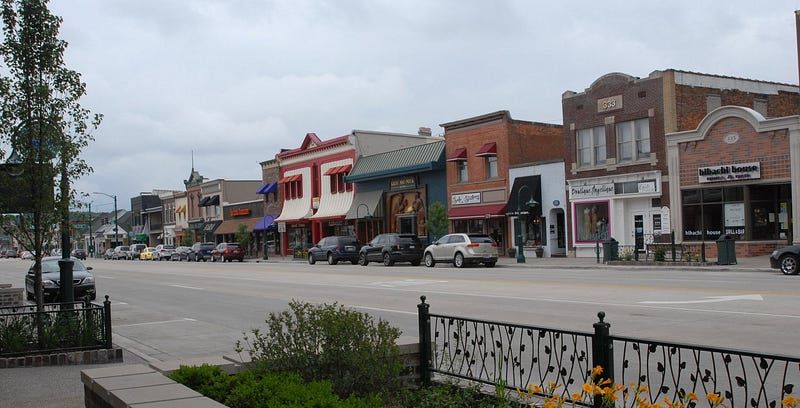
Main Street in Downtown Rochester, looking west. (Source: Rochester Downtown Development Authority )
This article was originally published on Medium .
I’ve lived in Rochester Hills for a little over two years. In that time, I’ve grown to love the community I’ve learned to call home as a commuter student at Oakland University and, as of last August, Wayne State University. I’ve met amazing people through school, found great spots to hang out after work, discovered restaurants offering both American and international cuisine, studied at multiple libraries, and enjoyed a huge variety of parks, rivers, trails, and green spaces.
The only problem? Getting around this place.
A Town Consumed By Traffic
Relatively speaking, Rochester Hills is not a tightly packed city. It’s a roughly six-mile by six-mile square with a hole carved out in the northeast for the City of Rochester. The problem lies in its location. Rochester Hills i s sandwiched between Auburn Hills and Utica, which places it between two of the most heavily congested corridors in all of Metro Detroit: Interstate 75 to the west and Hall Road to the east, with M-59 slicing through the southern portion of the city to connect the two. Much of the cross-traffic between these corridors flows through the streets of Rochester Hills during rush hour, which makes our city a bottleneck that bridges major thoroughfares.
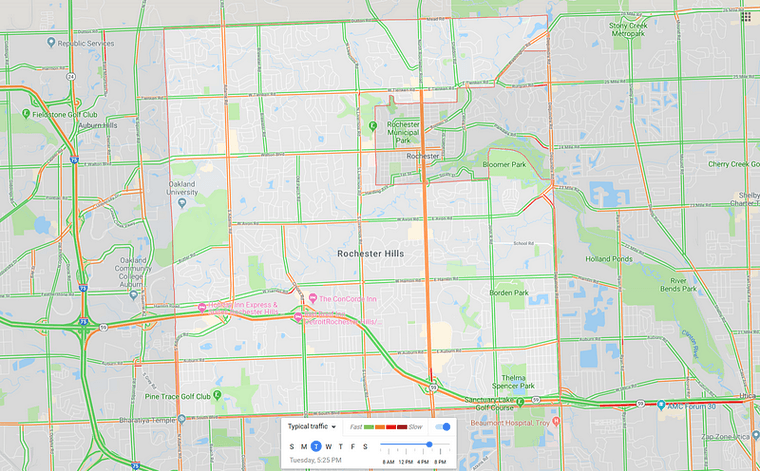
Typical traffic in Rochester Hills during the afternoon commute. Note that Adams Road, a prominent two-lane road on the west side, has considerable congestion as does Rochester Road, the city’s largest surface road. Multiple construction projects over the past two years have made the situation worse.
Rochester Hills: It’s an accurate name. Part of what makes our city beautiful is the hilly, winding two-lane roads that weave between our larger arteries and highways. They’re much less unnerving for a pedestrian or cyclist to cross than the six- or even eight-lane monstrosities our neighbors put up with like Squirrel Road and Hall Road.
But this means things get sticky when residents hop in their cars to run errands at the wrong time of day. I can say with a fair amount of confidence that our two-lane roads (like mine, Adams Road to the west) were never intended to handle the sheer volume of traffic we see roll through here.
Gridlock is a daily occurrence at many intersections. Vehicles can’t pass one another, so lines reach lengths of a quarter mile trapping residents in their driveways and employees in their parking lots. The worst offender: Avon and Dequindre. Ever tried to get out of Yates during rush hour in the fall? Yeah. Hope you have a full tank of gas.
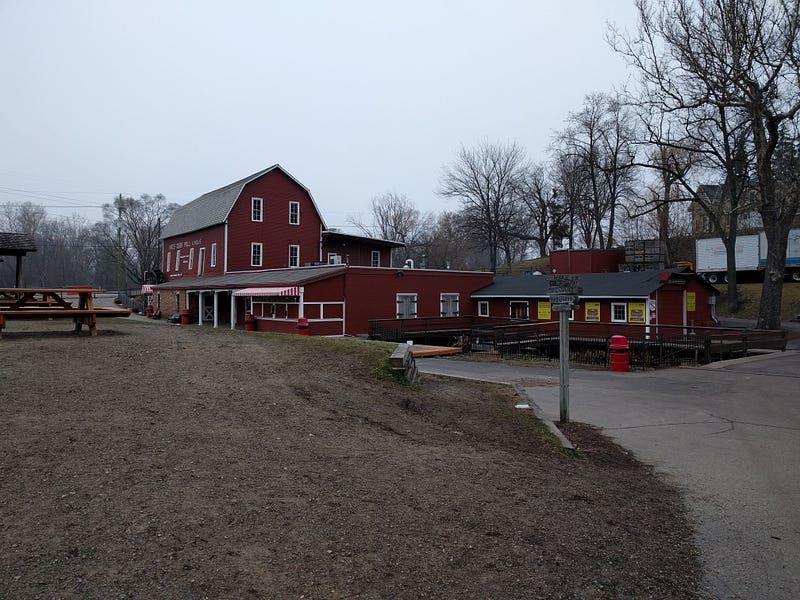
If you’re a local, you make a point to visit Yates when nobody else is there. You do NOT want to get stuck in the mass exodus from this place when it’s busy.
Our neighbors may contribute to traffic congestion here, but there’s one thing they’re doing right that we can learn from: They’ve opted into public transportation, namely bus service through SMART .
Rochester: Built with Alternative Transit in Mind
Rochester has something special: A walkable, lively downtown that spans multiple blocks. Rochester’s downtown is what development authorities in many other Detroit suburbs aspire to. Our downtown wasn’t fabricated for marketing purposes or to raise property values; it grew naturally, and is host to businesses that have been serving the community for decades. We have all of the framework laid down for a transit-friendly town — maintained sidewalks, crossings that meet modern ADA guidelines, and so on — yet we’re missing that final piece of a fully inclusive, accessible downtown.
The Rochester Downtown Development Authority’s mission statement emphasizes a desire to “preserve… downtown’s overall unique historic character.” A large part of that history was actually transit! The Detroit United Railway used to connect Rochester to Detroit and cities to the north including Lake Orion and Flint, and played an important role in the initial development of the area as proven by tracks found beneath Main Street . We can bring back part of this alternative transit connectivity with SMART.
The Student Perspective: Oakland University
I’m a new Oakland University alum. Ask any one of us about the worst part of a typical day at OU, and I guarantee you we’ll all give the same response in chorus.
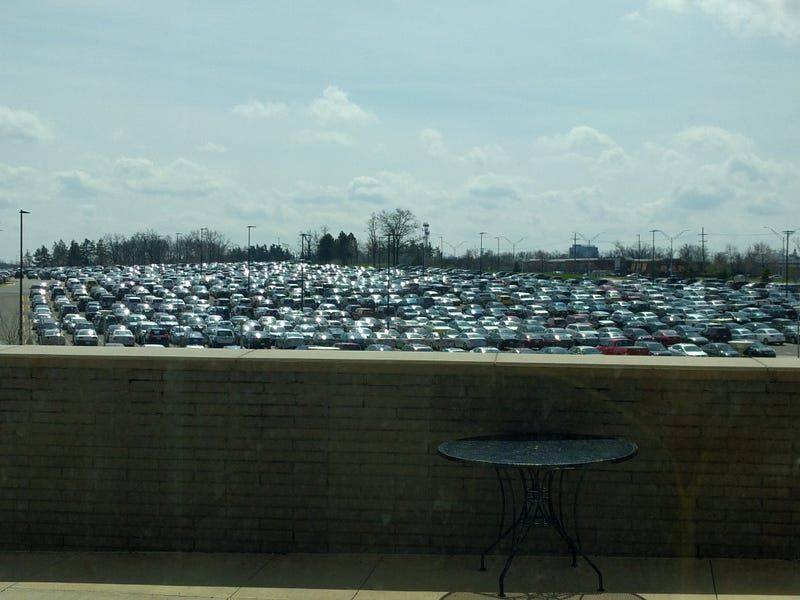
P1, Oakland University’s largest parking lot. Not pictured: Commuters circling the south aisles closest to the student center, eyes peeled for the ever elusive departing student.
Search our school paper, the Oakland Post , for articles involving parking and you’ll find innumerable complaints from students, faculty, and staff. The first article I ever read as student was a satire about parking , and let me tell you, it set the tone for the next three years of my commuting life.
I’m not the first from OU to call for improved transit in Oakland County , and I’m sure I won’t be the last. This isn’t just about students and staff commuting in from Rochester and Rochester Hills, it’s also about those commuting in from further east in Macomb County. Rochester Hills’s decision to opt out means there is a disconnect in SMART service between Oakland University and these areas.
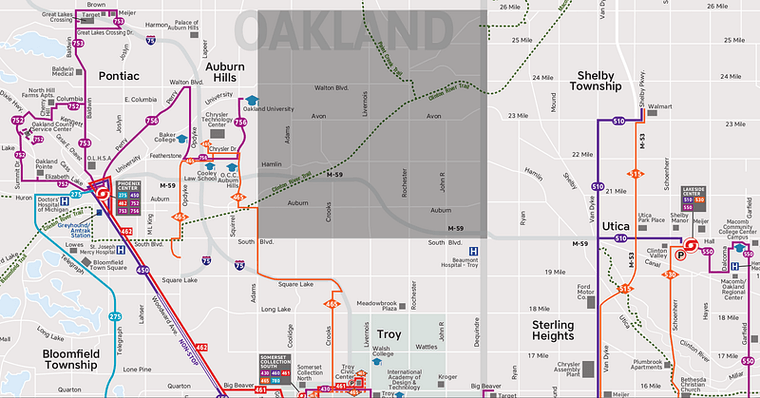
The grey area is Rochester Hills, the missing puzzle piece.
OU is a commuter school. Yes, the university is building new dorms and heavily promoting on-campus living, but even their most Herculean efforts won’t flip the majority — at least not in the near future. As student enrollment steadily increases, campus parking becomes increasingly inadequate, and the scene above becomes closer to the normal than the exception.
We don’t suffer through this parking fiasco because we want to. Right now OU is serviced only by a single SMART route, and that’s only possible because the university is in Auburn Hills, Rochester Hills, and the City of Rochester all at the same time depending on who you ask and where exactly on campus grounds you are. Students love the Bear Bus, a university-run shuttle service that travels to downtown Rochester, Meijer, a few restaurants, and Great Lakes Crossing at no charge. When they get back, their car is still waiting for them. Other Michigan colleges make successful use of transit — CATA in East Lansing and the University of Michigan’s bus system are two primary examples — and I’m willing to bet that college students who live in Oakland and Macomb counties would be more than happy to leave their car at home, buy a transit pass, and skip the game of musical parking spaces for good.
Author’s Note: A year following the original publication of this article, the Bear Bus service was discontinued .
The Employee Perspective: Jobs Here and There
Transit is a two-way street: It benefits the residents of a community who work elsewhere, and it also benefits those who commute into said community for work.
We’ve heard the story of James Robertson , and there will certainly be others who would benefit from bus service out of necessity. But it’ll help choice riders too. Say an employee is working a shift with an extended break, but doesn’t want to give up their parking spot? They can take a bus, grab a bite to eat, then be back to work without moving their car. (Personal anecdote, I do this all the time after class in Detroit — it can be done.)
And for the swaths of people who work in Detroit and live up here? Parking is ludicrously expensive downtown. I won’t even bother citing that, anyone who’s ever driven down there knows it well. And yes, people will take the bus: I started traveling to class in Detroit via FAST last year , and the bus I take to Detroit from Troy is stuffed with employees headed to Quicken Loans, the Renaissance Center, Ally, and other companies headquartered downtown. They all save hundreds of dollars on parking in doing so, and several people I’ve talked to are driving to Troy from their homes in Rochester Hills to do it. The interest is there. Not to mention, the money these riders would’ve spent on parking may now be spent locally within our city!
Detroit Transit is Evolving
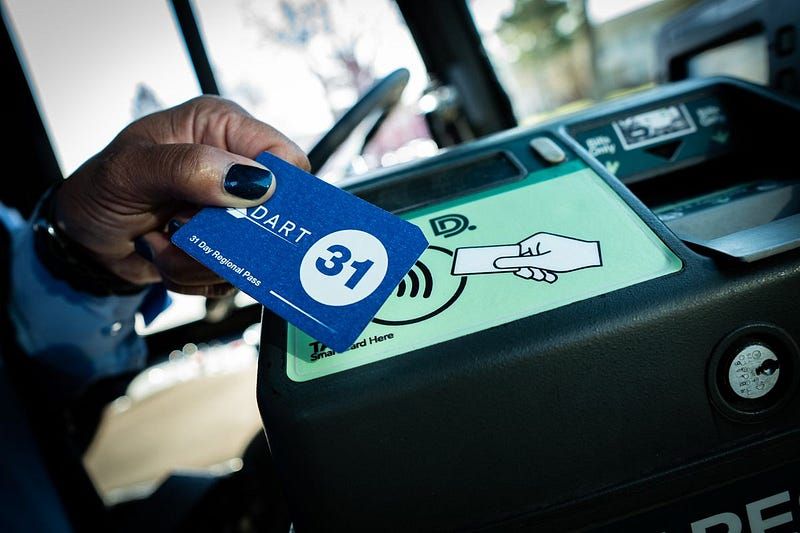
The new DART contactless payment system. (Source: City of Detroit )
Before 2018, the FAST express-service routes to Detroit from the suburbs didn’t exist. These buses are all brand new, and the routes are only in their second year of service. Their ease of use and high frequency drew in a lot of new riders — myself included — that had never traveled by bus before. Just today (May 1, 2019) DART came online, eliminating all transfer fees between SMART and DDOT buses and introducing contactless payment. Change is happening rapidly, and our bus system is only getting better. Does Rochester want to miss out?
For more information on FAST, see David Gifford’s set of articles .
The Public Health Perspective
I’m a pharmacy student so I feel obligated to spare at least a few words about public transportation and its positive effects on a community’s health. It’s important to remember that even in an affluent suburb there will be a percentage of the community that isn’t able to drive, be it due to age, a health condition, medications they’re taking, or some other reason — it’s even possible they just don’t have a driver’s license. In a car-centric community like our own, not being able to drive means giving up personal freedom if there’s no alternative to getting around.
Rochester does have OPC which is a wonderful service in its own right, but this pales in comparison to the freedom full SMART service would provide. With SMART, people who take advantage of OPC wouldn’t be limited to traveling within the community and to Oakland Township, OU or Troy Beaumont. They would be capable of reaching any city in the Metro area serviced by SMART, including Detroit. SMART’s Connector service would then fulfill the door-to-door service provided by OPC. This could allow a person to visit the mall (Rochester Hills doesn’t have an indoor mall), travel to a doctor’s appointment outside the city, or visit family. Buses are a means of restoring autonomy to community members who can’t get behind the wheel.
Easing Safety Concerns
This will have to be a learned experience for those who are new to transit. Over the past nine months I’ve ridden FAST countless times, SMART all over the Metro area, and DDOT around Midtown Detroit and the worst I’ve seen is a handful of people get flustered at the farebox. The timeliness of certain routes is its own issue at times, but I’ve never seen anyone get violent, threaten anybody, steal anything, or engage in any other behavior of that sort. Activity on the FAST buses is continuously recorded and monitored. So take that as you will. Be aware of your surroundings at the bus stop as you would be in any city and you won’t have any problems.
Best of Both Worlds: Private Cars and Buses Can Coexist
I want to be clear: The point of this article is not to convince residents to ditch their vehicle in favor of a bus as sole means of transport. Rochester Hills isn’t urban; it’s a suburb designed for people with cars. The bus isn’t going to magically restructure the layout of the community, and congestion will not wholly vanish from our roadways if we bring buses here. What the bus can do is help with the shorter, local trips where you’d just be burning gas. Heading into Rochester to visit a friend and don’t want to spend 20 minutes staking out streetside parking? Hop on a bus. Student heading to OU? Take a bus and chat with other students on the way.
It’s also helpful when traveling into Detroit. Heading to a game and don’t want to deal with parking costs and the city traffic? Take a bus — if Rochester Hills opts in, we’ll likely get a Park and Ride lot somewhere.
The Bottom Line: Let The People Choose
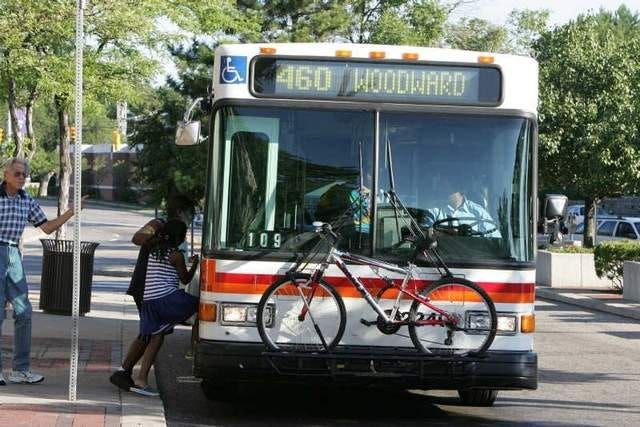
Woodward Local to Somerset. (Source: TRU )
Ultimately, the decision to opt into transit in the Rochester area should be made by the residents. As of now, the only way for us to exercise our voting power is for the city councils to bring the issue to the ballot during the next city election. Polls from as recent as last year have shown support within the community , but Rochester Hills mayor Bryan Barnett claims he hasn’t heard enough residents ask for bus service (supporters, speak up!).
If the majority of residents end up deciding that transit isn’t a priority right now and vote accordingly, then that’s okay — but those of us who see it for the major community benefit it would be should have the opportunity to vote for the change we feel is long overdue.
This is our city to navigate, and there are places to be in Southeast Michigan — Let’s be SMART about how we’re getting there.
Want more info?
David Gifford has written excellent articles on all things related to navigating public transit in Detroit. Go check them out!